48MP vs. 12MP: A Closer Look at Smartphone Cameras
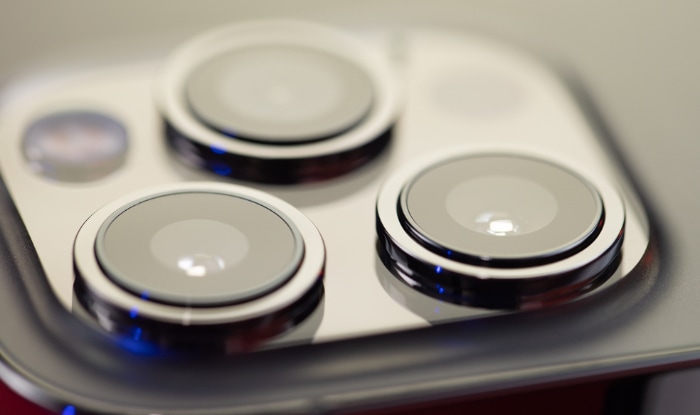
Modern smartphone cameras have sparked intense discussions about megapixel counts, particularly between 48MP and 12MP sensors. Both resolutions offer distinct advantages for mobile photography, yet many users remain uncertain about which better serves their needs.
High-resolution 48MP cameras promise extraordinary detail and enhanced zoom capabilities, making them attractive for users who love to capture intricate scenes or frequently crop their photos.
Meanwhile, 12MP sensors have earned praise for their exceptional low-light performance and efficient storage use, appealing to those who prioritize quick shots and practical file management.
Image Quality
The difference between 48MP and 12MP cameras goes far beyond simple numbers, fundamentally affecting how smartphones capture and process visual information. These variations in resolution create distinct advantages and limitations that become apparent in various shooting conditions.
Resolution and Pixel Count
A 48MP sensor packs four times the number of pixels compared to its 12MP counterpart, theoretically allowing it to capture significantly more detail in each shot.
This higher pixel density enables the camera to record fine textures, intricate patterns, and subtle color variations that might be missed by lower-resolution sensors.
The benefits of 48MP resolution become particularly noticeable in bright, outdoor settings. Taking photos of architectural details, landscape vistas, or group shots in daylight allows the sensor to utilize its full potential.
Users can observe crisp definition in elements like brick textures, leaf patterns, or fabric details that might appear slightly softer in 12MP images.
Sharpness and Clarity
Raw megapixel count tells only part of the story. Image sharpness depends on multiple factors working in harmony.
High-quality lens construction plays a crucial role – even the most advanced sensor cannot compensate for poor optics. Similarly, advanced image processing algorithms help maintain detail while reducing unwanted artifacts.
Modern smartphones employ sophisticated computational photography techniques to enhance sharpness. These processes analyze multiple frames, adjust contrast levels, and apply selective sharpening to create more visually appealing results.
The effectiveness of these techniques often matters more than pure resolution numbers.
Physical sensor size also significantly impacts image quality. A larger 12MP sensor might produce sharper images than a smaller 48MP sensor because each pixel has more surface area to collect light.
This explains why professional cameras with relatively lower megapixel counts can still produce exceptional results.
Resizing and Downscaling
One of the most interesting aspects of 48MP sensors lies in their ability to produce superior 12MP images through downscaling. This process combines data from multiple pixels to create a single, higher-quality pixel in the final image.
The result often shows improved detail retention and reduced visual noise compared to native 12MP shots.
Downscaling works by averaging information from neighboring pixels, effectively reducing random noise patterns while preserving genuine detail.
This technique proves particularly valuable in challenging lighting conditions, where the combined data from multiple pixels can help produce cleaner, more detailed images.
Many smartphone manufacturers have implemented automatic downscaling features that intelligently switch between full 48MP resolution and downscaled 12MP images based on shooting conditions.
This hybrid approach aims to provide the best possible image quality while managing file sizes and processing demands effectively.
The ability to capture at 48MP also offers more flexibility in post-processing. Photographers can choose to keep the full-resolution file for detailed editing or downscale later to achieve their desired balance between detail and file size.
This versatility makes 48MP sensors particularly appealing for users who enjoy fine-tuning their images after capture.
Low-Light Performance
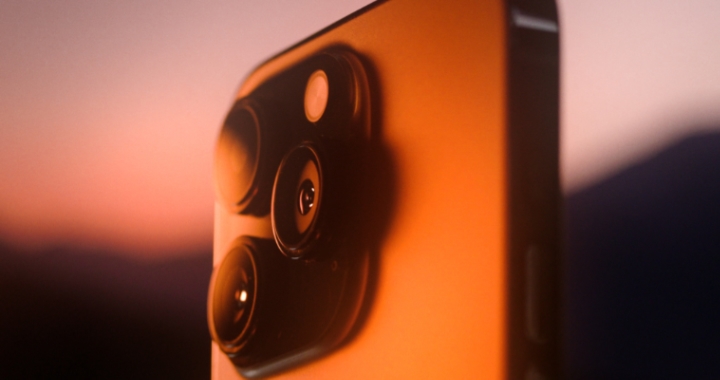
Low-light photography presents unique challenges that highlight significant differences between 48MP and 12MP sensors. The ability to capture clear, detailed images in dim conditions depends heavily on how each sensor design approaches light gathering and processing.
Pixel Size and Light Sensitivity
The relationship between pixel size and light sensitivity forms the foundation of low-light performance. A 12MP sensor typically features larger individual pixels compared to a 48MP sensor of the same physical size.
These larger pixels act like bigger buckets during rainfall – they can collect more light in the same amount of time.
For example, a typical 12MP sensor might have pixels measuring 1.4-1.8 micrometers, while a 48MP sensor often uses pixels around 0.8 micrometers. This size difference means each pixel in the 12MP sensor can capture approximately four times more light.
The increased light-gathering capability translates directly into better performance in challenging lighting situations, such as indoor scenes, evening shots, or photos taken in shadowy areas.
Noise Reduction
Digital noise becomes particularly problematic in low-light situations, appearing as grainy patterns or color specks throughout the image. The smaller pixels in 48MP sensors face greater challenges in maintaining clean, noise-free images under these conditions.
With less light reaching each pixel, the sensor must amplify the signal more aggressively, which inevitably introduces more noise.
The 12MP sensors, with their larger pixels, require less signal amplification to produce a bright image. This natural advantage results in cleaner, more detailed photos in low light, with better color accuracy and dynamic range.
The reduced noise levels also mean less aggressive noise reduction processing is needed, helping preserve fine details that might otherwise be lost.
Pixel Binning Technology
Manufacturers have developed pixel binning technology to address the low-light limitations of high-resolution sensors. This clever solution allows 48MP sensors to combine data from multiple pixels, effectively creating larger, virtual pixels that perform better in low light conditions.
Most 48MP sensors use quad pixel binning, combining four adjacent pixels into one larger unit. This process transforms the 48MP sensor into a 12MP sensor with improved light sensitivity.
The resulting virtual pixels behave similarly to the larger physical pixels found in native 12MP sensors, offering comparable low-light performance while maintaining the option to use full resolution in bright conditions.
Modern pixel binning implementations have become increasingly sophisticated, incorporating advanced algorithms that optimize the combination process.
Some sensors can even adapt their binning patterns based on scene content, using different combinations to maximize detail retention in various parts of the image.
This adaptive approach helps bridge the gap between high-resolution capabilities and low-light performance.
The technology also benefits from reduced noise levels compared to standard 48MP operation, as combining multiple pixels helps average out random noise patterns.
This improvement, combined with traditional noise reduction techniques, allows binned images to maintain better detail and color accuracy in challenging lighting conditions while still offering the flexibility of high-resolution capture when desired.
Zooming and Cropping Capabilities
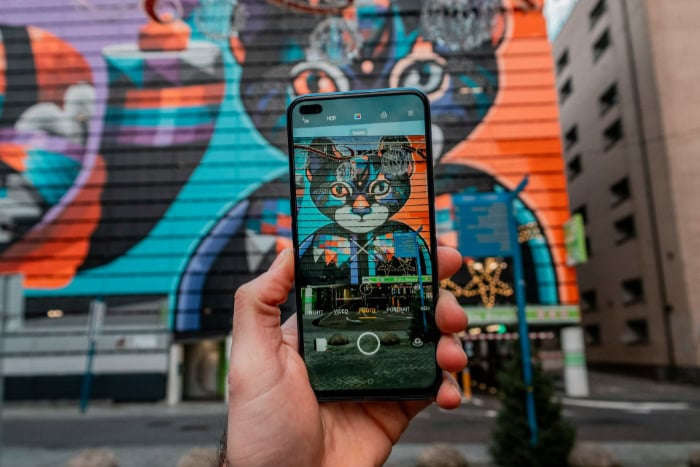
The resolution difference between 48MP and 12MP sensors becomes particularly notable in situations requiring digital zoom or extensive cropping. These capabilities significantly impact how photographers can compose and refine their shots, both during capture and in post-processing.
Digital Zoom Performance
Digital zoom fundamentally differs from optical zoom, as it relies on interpolation – the process of creating new pixels based on existing ones.
With a 48MP sensor, photographers start with four times more pixel information compared to a 12MP sensor, providing a substantial advantage during digital zooming.
This higher initial resolution allows for more aggressive zooming while maintaining acceptable image quality. For example, zooming in 2x on a 48MP image still leaves you with effectively 12MP of detail – equivalent to the full resolution of the 12MP sensor.
This means you can get closer to distant subjects without immediately sacrificing image quality.
The advantage becomes particularly apparent in situations where optical zoom isn’t available or practical.
Modern smartphones utilize this extra resolution through sophisticated processing algorithms that can maintain sharp edges and preserve fine details even at higher zoom levels.
The results often appear cleaner and more natural compared to heavily zoomed 12MP images, which may show visible pixelation or loss of detail.
Cropping Flexibility
The abundant resolution of 48MP sensors provides exceptional freedom in post-processing, especially for cropping. Photographers can substantially trim their images while maintaining enough resolution for high-quality prints or digital display.
This flexibility proves invaluable for adjusting composition after the fact or isolating specific elements within a scene.
A 48MP image can be cropped to less than half its original size while still retaining more pixels than a full 12MP shot.
This extra headroom allows photographers to experiment with different aspect ratios, create multiple compositions from a single shot, or correct slight framing issues without compromising output quality.
Professional photographers and enthusiasts particularly appreciate this capability as it allows them to shoot wider and adjust their composition later, rather than risking missing a moment while trying to frame the perfect shot.
The higher resolution also maintains better detail in cropped areas, preserving textures and fine elements that might be lost when cropping a 12MP image.
Practical Applications
The enhanced zooming and cropping capabilities of 48MP sensors open up numerous creative possibilities across various photography scenarios. Nature photographers can capture wider views of wildlife scenes, then crop in to highlight specific animals without sacrificing detail.
Street photographers might shoot from further away to capture candid moments, later zooming in to focus on interesting details or expressions.
Architecture photography benefits significantly from these capabilities. Photographers can capture entire buildings, then crop to emphasize specific architectural details while maintaining enough resolution for professional use.
Similarly, event photographers can take wider group shots, later creating multiple compositions focusing on different individuals or smaller groups.
Sports and action photography also gains advantages from these capabilities. The ability to crop significantly while maintaining detail allows photographers to position themselves more safely or conveniently while still capturing close-up action shots.
This proves especially valuable in situations where physical proximity to the subject isn’t possible or permitted.
The extra resolution also benefits social media content creators, who often need to produce multiple crops of the same image for different platforms.
A single 48MP shot can be cropped and adjusted to create versions for various aspect ratios – from square Instagram posts to vertical stories – while maintaining excellent detail in each version.
File Size and Storage Considerations
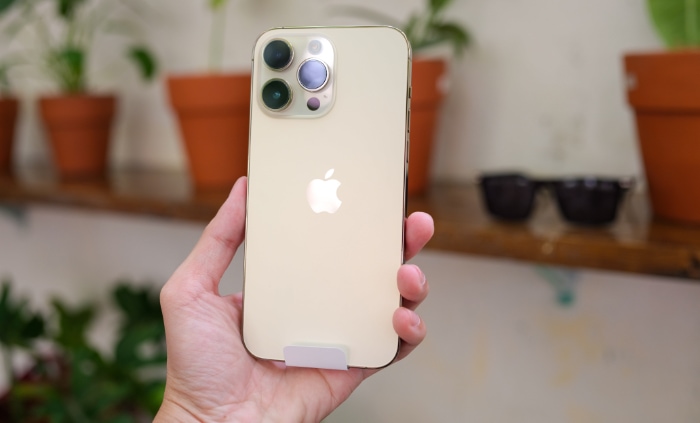
Storage management becomes increasingly significant as smartphone cameras advance in resolution. The substantial difference between 48MP and 12MP sensors creates notable implications for device storage, sharing capabilities, and overall photo management strategies.
File Size Differences
The mathematics of image storage reveals significant disparities between 48MP and 12MP photos. A typical 12MP image might occupy 2-4MB of storage space, while a 48MP image can easily consume 8-16MB or more, depending on the scene complexity and compression settings.
This size difference multiplies rapidly as users accumulate photos on their devices.
For example, capturing 100 photos at 48MP could occupy 800MB-1.6GB of storage space, compared to 200-400MB for the same number of 12MP images.
This difference becomes particularly noticeable during extended photo sessions or vacations where hundreds of pictures might be taken daily. Raw format images amplify this disparity further, with 48MP RAW files potentially reaching 40-80MB per image compared to 10-20MB for 12MP RAW files.
Storage Management
Managing larger image files requires thoughtful planning and organization. Modern smartphones offer several built-in tools to help users balance storage needs with image quality.
Automatic cloud backup services can free up local storage while preserving full-resolution images online. Many devices also include smart storage optimization features that automatically suggest removing backed-up photos when space runs low.
Users can employ various strategies to maximize storage efficiency. Setting the camera to capture in 12MP mode for casual shots while reserving 48MP for important photos helps maintain balance.
Some photographers create separate albums for high-resolution images and everyday snapshots, making it easier to manage storage space systematically.
Cloud storage services play a vital role in modern photo management. Services like Google Photos, iCloud, or OneDrive offer substantial storage space with automatic upload features.
These services often include intelligent compression options that maintain visual quality while reducing storage requirements. Users can keep original files in cloud storage while maintaining compressed versions on their devices for quick access.
Impact on Sharing and Uploading
Large file sizes from 48MP cameras can significantly affect how users share and distribute their photos. Social media platforms typically compress uploaded images automatically, potentially negating the benefits of higher resolution captures.
Facebook, Instagram, and Twitter all apply their own compression algorithms, which might reduce a 16MB 48MP photo to under 1MB for web display.
Mobile data usage becomes an important consideration when sharing high-resolution images. Sending multiple 48MP photos through messaging apps or email can quickly consume significant amounts of data.
This proves particularly relevant for users with limited data plans or in areas with slower internet connections.
Professional photographers and content creators often need to maintain separate workflows for different purposes. They might keep full-resolution files for printing or editing while creating optimized versions for social media sharing.
Many photo editing apps now include export presets specifically designed for various social platforms, helping users balance quality with practical file size limits.
The time required to upload and download larger files also affects the user experience. Sharing a collection of 48MP photos might take considerably longer than sharing the same number of 12MP images, particularly in areas with limited bandwidth.
This can impact real-time sharing situations, such as during events or when immediate delivery is needed.
Processing Speed and User Experience
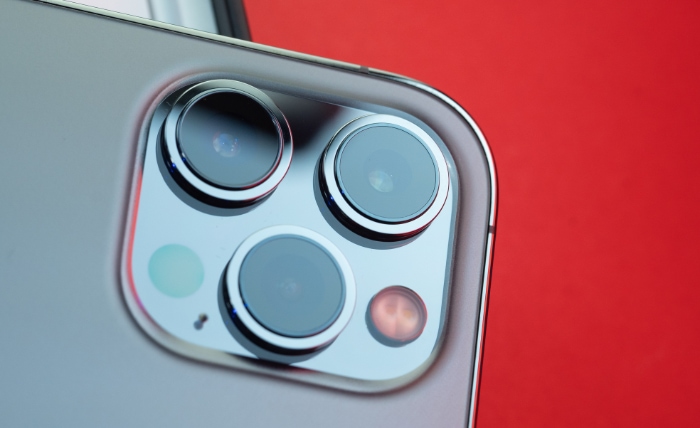
The resolution difference between 48MP and 12MP cameras extends beyond image quality, significantly affecting how smartphones handle photo processing, power consumption, and overall performance.
These factors directly impact the daily photography experience for users.
Image Processing Time
Processing 48MP images demands considerably more computational power than handling 12MP shots. This difference becomes apparent in various shooting scenarios, particularly with advanced photography features.
A single 48MP image requires the phone to process four times more data than a 12MP image, leading to longer processing times and potential delays between shots.
Burst mode photography highlights these processing differences most clearly. While a smartphone might capture and process 20-30 frames per second in 12MP, the same device could slow to 10-15 frames per second at 48MP.
This limitation affects action photography, where rapid continuous shooting helps capture the perfect moment. Similarly, HDR photography requires combining multiple exposures, making the processing time even more noticeable with 48MP images.
Advanced computational photography features like night mode or portrait effects also take longer to process at higher resolutions. What might be a one-second processing time for a 12MP portrait photo could extend to three or four seconds for a 48MP image.
This delay can affect the spontaneity of photo-taking and might cause missed opportunities in fast-moving situations.
Battery Life Implications
Higher resolution photography places additional demands on smartphone batteries through multiple mechanisms. The image sensor itself consumes more power when operating in 48MP mode, as it needs to read and process data from four times as many pixels.
This increased power draw becomes particularly noticeable during extended photo sessions.
The computational overhead of processing larger images also impacts battery life. The phone’s processor must work harder and longer to handle 48MP files, leading to increased energy consumption.
Features like HDR, portrait mode, or AI enhancement require even more processing power at higher resolutions, further accelerating battery drain.
Preview generation and image review also contribute to battery consumption. Displaying and manipulating 48MP images on the screen requires more processing power than handling 12MP shots.
Users who frequently review and edit their photos might notice faster battery depletion when working with high-resolution images.
App Responsiveness
Camera app performance varies significantly between 48MP and 12MP modes. Opening and displaying high-resolution preview images requires more system resources, potentially causing slight delays in app launch times and interface responsiveness.
These delays might seem minor individually but can accumulate to create a less fluid photography experience.
Photo gallery apps face similar challenges when handling 48MP images. Scrolling through a gallery of high-resolution photos demands more processing power and memory, potentially causing stutters or lag, especially on mid-range devices.
Third-party editing apps might also exhibit slower performance when processing 48MP files, affecting the overall editing workflow.
Memory management becomes more critical with 48MP photography. Smartphones must allocate larger portions of RAM to handle these files, potentially affecting multitasking performance.
Users might notice other apps running slower or reloading more frequently when working with numerous high-resolution photos.
The impact on app responsiveness extends to social media and sharing applications. Apps need more time to prepare 48MP images for posting, often requiring downscaling or compression before upload.
This processing can cause temporary freezes or delays in the sharing interface, particularly when handling multiple high-resolution images simultaneously.
Conclusion
Both 48MP and 12MP cameras offer distinct advantages for smartphone photography. Higher resolution sensors excel at capturing fine details in well-lit conditions, providing superior cropping flexibility and digital zoom capabilities.
Their ability to produce detailed images makes them ideal for photographers who print large photos or frequently edit their work.
Meanwhile, 12MP sensors demonstrate excellent low-light performance through larger pixel sizes, creating cleaner images with less noise in challenging conditions.
They also offer practical benefits like smaller file sizes, faster processing times, and more efficient battery usage during photo sessions.
Modern technology bridges these differences through innovations like pixel binning, allowing 48MP sensors to function effectively in various lighting conditions while maintaining the option for high-resolution capture.
Your choice between these resolutions should align with your photography habits – considering factors such as typical shooting conditions, storage requirements, and post-processing needs.
Remember that image quality depends on more than resolution alone. Sensor quality, lens design, and processing algorithms play vital roles in producing outstanding photos, regardless of megapixel count.
Focus on matching your camera’s capabilities with your photography style and requirements for optimal results.



